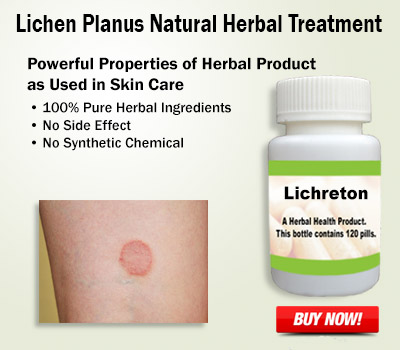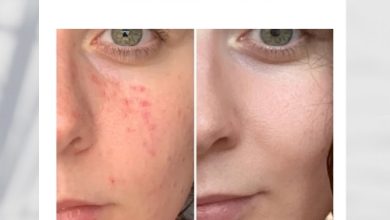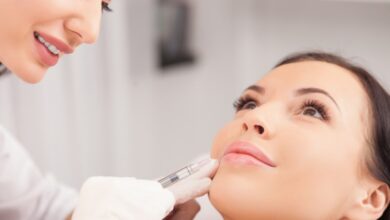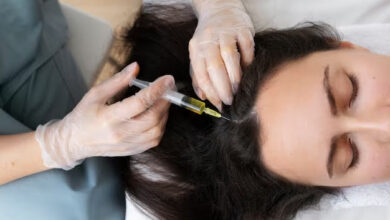Bullous Lichen Planus: Causes, Symptoms, and Best Supplements for Treatment

Bullous Lichen Planus is a rare but severe form of lichen planus that affects the skin, hair, and nails. It is characterized by the formation of fluid-filled blisters on the skin, which can be painful and itchy. This condition is caused by an abnormal immune response, but the exact cause is still unknown. While there is no known cure for bullous lichen planus, there are various treatment options available to help manage symptoms and improve overall skin health. In addition to traditional medical treatments, incorporating the best supplements for lichen planus, such as hair skin, and nail supplements, can also play a significant role in managing this condition. Let’s take a closer look at the causes, symptoms, and best supplements for lichen planus.
Bullous Lichen Planus and Its Causes
Bullous Lichen Planus is a rare and severe form of lichen planus that affects the skin, hair, and nails. While the exact cause of this condition is still unknown, it is believed to be triggered by an abnormal immune response. The immune system mistakenly attacks the skin cells, leading to the formation of fluid-filled blisters on the affected areas.
In addition to the immune system dysfunction, several other factors may contribute to the development of bullous lichen planus. Genetic predisposition is one such factor, as individuals with a family history of lichen planus may have an increased risk of developing the bullous form. Certain medications, such as nonsteroidal anti-inflammatory drugs (NSAIDs), can also trigger bullous lichen planus in some cases. High stress levels and emotional distress can weaken the immune system and make individuals more susceptible to bullous lichen planus.
While conventional medical treatments for bullous lichen planus primarily focus on managing symptoms and preventing further flare-ups, there is growing interest in natural treatment approaches. Lichen Planus natural treatments, such as dietary changes, herbal remedies, and supplements, may help reduce inflammation, boost immune function, and improve overall skin health. In the following sections, we will explore these natural treatment options and their potential benefits in managing bullous lichen planus.
Identifying the Symptoms of Bullous Lichen Planus
If you suspect you may have bullous lichen planus, it’s important to familiarize yourself with the symptoms to seek proper diagnosis and treatment. While bullous lichen planus is a rare condition, recognizing its symptoms early on can help prevent further complications.
One of the most distinctive signs of bullous lichen planus is the formation of fluid-filled blisters on the skin. These blisters can vary in size and may be accompanied by redness and itching. They typically occur on the arms, legs, and torso, but can also appear on the scalp, nails, and mucous membranes.
Another symptom of bullous lichen planus is thinning or loss of hair in the affected areas. This can be particularly distressing for those experiencing hair loss, as it can significantly impact self-esteem.
In addition, individuals with bullous lichen planus may experience pain or tenderness in the affected areas, especially when the blisters rupture or become irritated. It’s important to note that these symptoms can vary in severity from person to person, and some individuals may not experience all of these symptoms.
If you suspect you may have bullous lichen planus, it’s essential to consult a dermatologist or healthcare professional for a proper diagnosis. They can evaluate your symptoms, perform necessary tests, and recommend appropriate treatment options.
In the next section, we will discuss the diagnostic methods commonly used to confirm bullous lichen planus.
Diagnostic Methods for Bullous Lichen Planus
When it comes to diagnosing bullous lichen planus, healthcare professionals employ various methods to ensure an accurate diagnosis. These diagnostic methods are crucial in distinguishing bullous lichen planus from other skin conditions and determining the appropriate treatment approach.
The first step in diagnosing bullous lichen planus is a thorough physical examination. The dermatologist will carefully inspect the skin, hair, and nails for any characteristic signs of the condition, such as fluid-filled blisters or redness. In some cases, a biopsy may be necessary. During a biopsy, a small sample of skin is taken and sent to a laboratory for further examination. This can help confirm the presence of bullous lichen planus and rule out other potential causes.
In addition to a physical examination and biopsy, other diagnostic methods may be used to support the diagnosis of bullous lichen planus. These may include blood tests, allergy testing, or patch testing. Blood tests can assess immune function and identify any underlying conditions that may be contributing to the development of bullous lichen planus. Allergy testing and patch testing can help identify any triggers or allergens that may be exacerbating symptoms.
Overall, the combination of a physical examination, biopsy, and additional diagnostic tests can provide healthcare professionals with a comprehensive understanding of the condition. This allows for more personalized and effective treatment plans for individuals with bullous lichen planus.
In the next section, we will explore the best supplements for bullous lichen planus treatment, focusing on how they can help manage symptoms and promote skin health. Stay tuned to learn more about natural treatment options for this condition.
Best Supplements to Aid Bullous Lichen Planus Treatment
When it comes to managing bullous lichen planus, incorporating supplements into your treatment plan can provide significant benefits. Lichen planus natural treatments can help reduce inflammation, boost immune function, and promote overall skin health. Here are some of the best supplements to aid bullous lichen planus treatment:
- Hair skin and nails supplement: Bullous lichen planus can cause thinning or loss of hair, so a supplement specifically designed to support hair, skin, and nails can be beneficial. Look for supplements that contain essential vitamins and minerals like biotin, zinc, and vitamin E.
- Turmeric: This powerful spice has anti-inflammatory properties and may help reduce inflammation associated with bullous lichen planus. Turmeric supplements are available in capsule form, making it convenient to incorporate into your daily routine.
- Omega-3 fatty acids: Found in fish oil or algae oil supplements, omega-3 fatty acids have been shown to reduce inflammation and promote skin health. They can also help support overall immune function.
- Aloe vera: Aloe vera gel or capsules may help soothe the skin and reduce itching associated with bullous lichen planus. It also has anti-inflammatory properties that can provide relief.
Remember to consult with a healthcare professional before starting any new supplement regimen, especially if you have any underlying medical conditions or are taking other medications. They can provide personalized recommendations and ensure that supplements are safe and effective for your specific needs.
Adopting a Holistic Approach to Manage Bullous Lichen Planus
Taking a holistic approach to managing bullous lichen planus can be a beneficial complement to medical treatments. Lichen planus natural treatment options focus on addressing the underlying causes of the condition, reducing inflammation, and promoting overall skin health.
One important aspect of a holistic approach is making dietary changes. Consuming a nutrient-rich diet that includes fruits, vegetables, whole grains, and lean proteins can support immune function and overall skin health. Additionally, reducing or eliminating processed foods, sugar, and alcohol can help reduce inflammation and support the healing process.
Incorporating stress management techniques is another essential part of a holistic approach. Engaging in activities like meditation, yoga, or deep breathing exercises can help reduce stress levels and support immune function.
In addition to dietary changes and stress management, herbal remedies can be used as part of a holistic approach to managing bullous lichen planus. Certain herbs, such as aloe vera, chamomile, and calendula, have anti-inflammatory and soothing properties that can provide relief for symptoms like itching and redness.
By adopting a holistic approach that includes dietary changes, stress management, and herbal remedies, individuals with bullous lichen planus can support their immune system, reduce inflammation, and promote overall skin health. It’s important to consult with a healthcare professional before starting any new treatment approaches, especially if you have any underlying medical conditions or are taking other medications.




